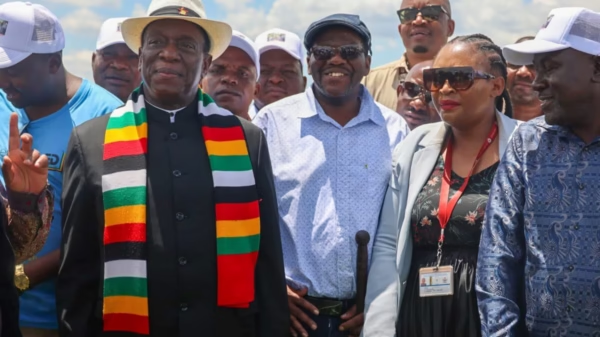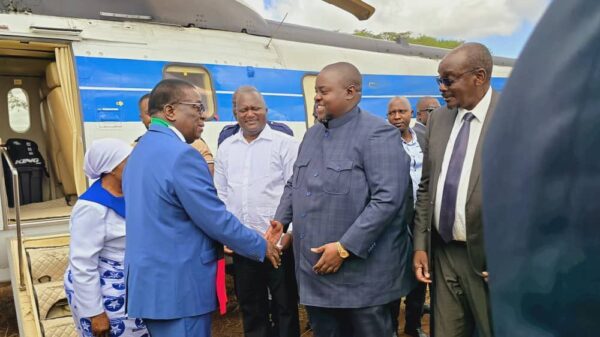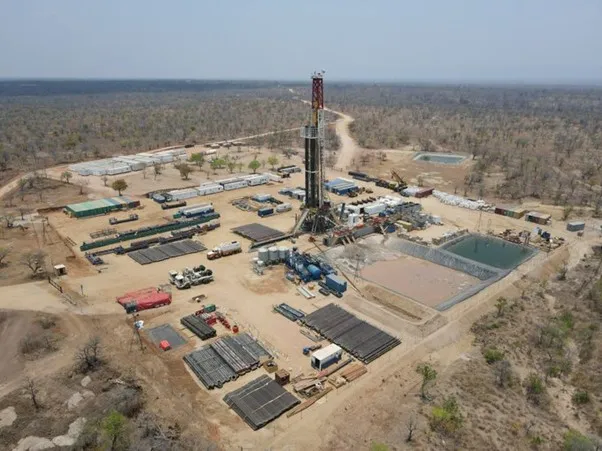Invictus Energy, an Australian company looking for oil and gas in the Cabora Bassa region of northern Zimbabwe, says the results of mudgas analysis for its Mukuyu-1 exploration well have confirmed the ‘definite’ presence of hydrocarbons in line with the firm’s geological modeling, increasing the likelihood of commercial discovery.
Zimbabwe is getting closer to making a commercial oil and gas find after analyzing data from the Mukuyu-1 test well revealed significant evidence of gas resources.
President Mnangagwa stated in 2021 that the successful finding of oil and gas in Zimbabwe will make the country energy self-sufficient, generate jobs, develop the economy, and provide tremendous downstream benefits to the economy.
Speaking during the signing of the Petroleum Exploration Development and Production Agreement (PEDPA) with Invictus then, the President also said Zimbabwe’s oil and gas industry represented huge, unique and competitive investment opportunities given the significant potential for value chain linkages.
He said just “the prospect of oil discovery is exciting”, which will inevitably positively impact local communities and the national economy at large.
And less than two years later, the results of mudgas data analysis from the exploration drilling at the Mukuyu-1 test well have pointed to the possibility of the search for oil becoming a reality.
Mud analysis logging is a direct method of detecting oil and gas in formations drilled.
Invictus also earlier indicated that data collected during the actual drilling exhibited encouraging evidence pointing to the presence of oil and gas.
The Australia Stock Exchange-listed company commenced exploration drilling at its Mukuyu-1 prospect in Mbire, Mashonaland Central Province, in September last year.
The latest results of the data analysis of gas quantities in the mud from the Mukuyu-1 exploration well have revealed the presence of light oil, gas-condensate and helium, Invictus said, which confirms multiple oil and gas underground pockets consistent with the geologic formations of the drilled test well.
Further interpretation of the results from the exploration drilling at Mukuyu-1 has continued to give results that strongly support the presence of oil and gas (petroleum deposits in Cabora Bassa.
However, following technical issues encountered during exploration drilling at Mukuyu-1, which impeded the recovery of samples from the well, Invictus could not declare commercial discovery, as required by Australia’s Stock Exchange listing rules.
As such, Invictus will drill an appraisal well, Mukuyu-2, to confirm the size of a hydrocarbon deposit.
Appraisal wells are drilled, normally to run buildup tests, drill stem tests, ascertain top and bottom of formation, gather core or fluid samples or for other evaluations.
“Results from the mudgas compositional analysis definitively prove the presence of hydrocarbons in multiple reservoir pay zones at Mukuyu-1 consistent with the wireline log interpretation, fluorescence, and elevated mudgas readings.
“Analysis shows the presence of light oil and rich natural gas-condensate, with condensate gas ratios estimated at between 30 to 135 barrels per million cubic feet.
“The analysed samples demonstrate a consistent, high-quality natural gas composition, exhibiting low inert content, containing less than 1 percent CO2.
“Furthermore, the presence of helium gas in commercial concentrations in multiple reservoir units is comparable with global helium-producing fields and provides an additional high-value by- product.
“We are extremely pleased with the results from the mudgas analysis which confirm our geological modelling of the Cabora Bassa Basin and the presence of both light oil and gas- condensate provides us with confidence as we prepare for the drilling of Mukuyu-2 in Q3 this year.
Invictus said compositional analysis of mudgas from Mukuyu-1 indicated the presence of light (volatile) high API (American Petroleum Institute) oil or oil-associated gas condensate (hydrocarbon stream).
in the shallower Upper Angwa reservoirs, which progressively become drier, that is lower condensate gas ratio (CGR) with increasing depth in the Upper Angwa formation.
The firm said the presence of liquid hydrocarbons (light oil and condensate) is consistent with the observed fluorescence and elevated mudgas readings with heavier hydrocarbon components observed during the drilling of Mukuyu-1.
Several samples also contain commercial concentrations of helium gas, which will provide an additional high-value by-product. Helium is a critical component in many fields, including scientific research, medical technology, high-tech manufacturing, space exploration, and national defense.
If the company makes a commercial discovery, Zimbabwe will join other countries in the region, among them Mozambique, South Africa and Namibia, which recently discovered petroleum deposits.
In oil and gas, an explorer may either drill a dry hole, where no evidence of hydrocarbons exists or achieve technical discovery, which means petroleum deposits that are not exploitable. Importantly, a commercial discovery entails the existence of moveable, viable and extractable petroleum deposits.
Invictus principal asset is the special grant (SG) 4571 located in the Cahora Bassa Basin (Muzarabani and Mbire) in Zimbabwe, which contains the world-class Mukuyu (Muzarabani) prospect, the largest undrilled prospect in onshore Africa, independently estimated to contain 20 trillion cubic feet and 845 million barrels of conventional gas condensate.
The firm’s other asset, exclusive prospecting order (EPO) 1849, contains the basin margin drill tar with an estimated 1,2 billion barrels of oil across five drill-ready prospects, which will be tested by the Baobab-1 well.
The potential discovery of oil and gas presents a potential breakthrough for Zimbabwe, as it could guarantee energy security, create new jobs and drive economic and export growth.
The mining sector, under which the oil and gas sub-sector falls, is expected to contribute US$12 billion annually to the economy by 2023, providing a major stepping stone towards the national vision of transforming Zimbabwe into an upper middle-income economy by 2030.

For comments, Feedback and Opinions do get in touch with our editor on WhatsApp: +44 7949 297606.









































